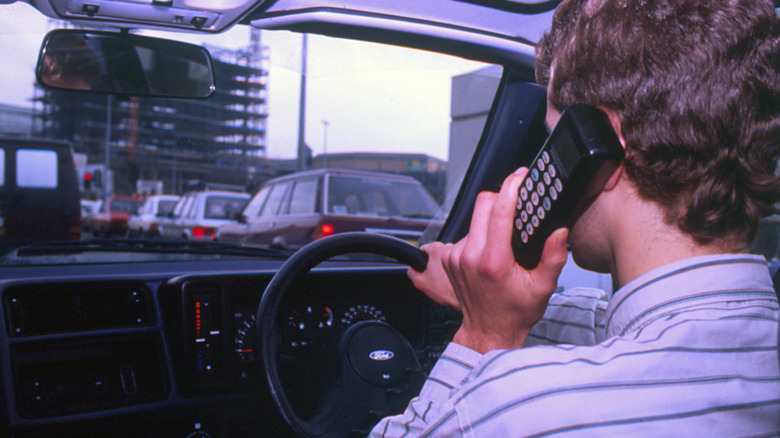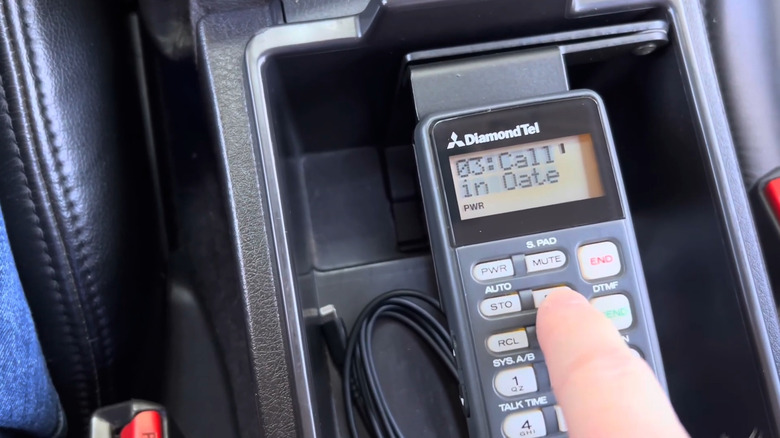Do Old Car Phones Still Work? (And What Networks Did They Use?)
Car phones were first revealed all the way back in 1946, costing $25 to have them installed — that's around $438 in today's money. In 1985, it went up to $1,700 to get a car phone ($5,141.61 in today's money). Throughout the 1990s, car phones continued to be a sign of luxury. But as mobile phones became more accessible going into the 2000's, there was not really a need for car phones anymore — a simple phone mount will do today.
Now, finding an old car with a car phone is an interesting portal into car technology of the past. However, some ambitious techies have found ways to make these car phones function decades after the defunct tech was discontinued. In North America, the early 1940's car phones used the Public Switched Telephone Network, which had both "highway" and an "urban" service. By 1948, there were 60 cities in North America that had the urban car phone service, totaling 4,000 mobile subscribers and 117,000 calls every month. The highway service was in 85 cities, handling 36,000 calls per month.
Analog cellular service arrived in 1983, bringing cell phones along with it. This allowed car phones to continue to evolve, even introducing built-in GPS at the start of the 1990's. AMPS technology was discontinued in 2008, putting an end to car phone functionality in North America.
Man brings old car phone to life
Despite AMPS coming to an end, car phones' analog technology still functions — it just needs a network. This has led a tech enthusiast to spend three years figuring out how to make a 1990's car phone fully functional into 2025.
Software engineer Jeff Lau impressed his YouTube audience when he showed how he restored the car phone in his 1993 Mitsubishi 3000GT VR-4. Once considered useless due to AMPS being discontinued decades earlier, Lau found a way to build a Bluetooth adapter that connected the car phone to modern cellphone networks. According to Lau, he could use the 1993 car phone to make calls, receive calls, respond to voice commands, and even use Apple's Siri. In Lau's video on his UselessPickles YouTube channel, he even asked Siri to tell a joke and find a song through the car phone.
In the height of the '90s, car phones were considered somewhat of a "status symbol," with businesspeople reporting about $700 a month for 12 hours worth of calls to clients and friends ($1,753 in today's money). At the time, a lawyer said in a street interview with CBC: "It's like a dishwasher. Like, you don't know how you didn't have one before." While we've since moved on to mobile cell phones, Lau has shown that car phones can still fit into the modern world even if they no longer come with car models anymore.

